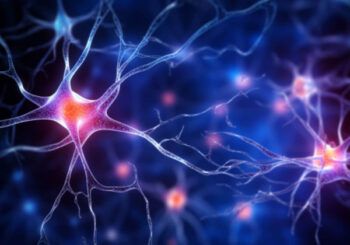By Jane Marsh
Guest Writer for Wake Up World
Scientists from the University of Lausanne and the Wyss Center for Bio and Neuroengineering in Geneva have uncovered a groundbreaking hybrid cell in the brain. Showing characteristics of both neurons and glial cells, this newly identified cell type may be the key to better treatment of neurodegenerative conditions.
[pro_ad_display_adzone id=”110028″]
Historically, glial cells, especially astrocytes, were thought to primarily support neuron functions. However, this recent discovery challenges this long-held belief. Instead of being passive supporters, these hybrid cells, now referred to as “glutamatergic astrocytes,” actively release neurotransmitters, particularly glutamate.
What Are Hybrid Brain Cells?
Using advanced molecular biology methods, like fiber photometry and GCaMP6 calcium sensors, the research team revealed that astrocytes possess the machinery needed for rapid glutamate secretion. Single-cell transcriptomics further verified this capability, identifying specific transcripts in astrocytic cells responsible for this release. This phenomenon was observed in mice, and preliminary findings suggest it’s true in human cells as well.
Advanced imaging demonstrated that a subset of these astrocytes can release glutamate at locations resembling synapses, thereby influencing synaptic transmission and regulating neuronal circuits.
Functionally, these hybrid cells have a significant impact on the brain. They control communication, neuron excitation and overall neuronal activity. When their ability to release glutamate was compromised, it affected the memory-associated neural process, known as long-term potentiation, in mice. This led to memory issues.
Moreover, these glutamatergic astrocytes might have broader implications. Disturbances in these cells affected memory, aggravated epilepsy symptoms and influenced brain circuits tied to movement, showing therapeutic potential for conditions like Parkinson’s disease.
Co-director of the study, Andrea Volterra, believes this new discovery paves the way for promising research opportunities. The team is keen on further exploring the protective qualities of these cells, particularly against memory deficits in Alzheimer’s disease and understanding their role across various brain disorders.
Morphology and Structure
The hybrid cells have distinct morphological traits. They present with features that are intermediate between neurons and glial cells. Their soma or cell body, is more intricate than glial cells but not as elaborate as neurons.
Unlike typical glial cells, these hybrid cells have short, rudimentary dendritic structures, suggesting a potential for limited synaptic connectivity. Electron microscopy also reveals the presence of intermediate filaments typical of glial cells, suggesting a structural stability or support role.
Genetic and Molecular Markers
These cells express certain neuronal genes like NeuN and MAP2, albeit at reduced levels compared to regular neurons. There’s a pronounced expression of glial markers such as GFAP, which is a characteristic of astrocytes and MBP, which is usually observed in oligodendrocytes.
Function and Physiology
Preliminary electrophysiological recordings indicate that while these cells can generate action potentials like neurons, they do so at a reduced frequency and magnitude.
There’s evidence suggesting that these cells can release certain neurotransmitters but lack the full synaptic machinery that typical neurons possess. Much like glial cells, the hybrid cells respond robustly to changes in the environment, suggesting a potential role in maintaining brain homeostasis.
[pro_ad_display_adzone id=”110030″]
Origin and Development
The origin of the hybrid brain cell is still a matter of debate. Some researchers believe they might arise from stem cells during a failed attempt at neurogenesis, while others suggest they might evolve from glial cells under certain conditions.
When it comes to environmental triggers, there is a possibility that certain stressors or injuries might trigger the development of these cells as a protective or reparative mechanism.
Role in Synaptic Plasticity
Given their rudimentary dendritic structures and potential for neurotransmitter release, hybrid cells might play a role in modulating synaptic strength, particularly in damaged or stressed regions.
Potential Clinical Relevance
Changes in the number or function of hybrid cells could serve as early indicators of neurodegenerative conditions. Understanding the formation of these cells could be pivotal for strategies aiming at brain repair or regeneration.
The newly discovered hybrid brain cell can be key to a better understanding and treatment of neurodegenerative diseases, as current options have limited effect and more often only alleviate symptoms and slow down disease progression instead of halting and reversing it.
Limited Efficacy and Side Effects of Current Treatments
Many current treatments provide symptomatic relief but don’t alter the underlying disease course. For instance, drugs for Parkinson’s disease, such as levodopa, can alleviate symptoms but do not halt disease progression. For medications that are well-known for effectively relieving symptoms, side effects may hamper the patient’s quality of life. For example, dopaminergic medications for Parkinson’s can cause dyskinesias or involuntary movements over time.
Aside from the side effects, some newly approved treatments, like Aducanumab for Alzheimer’s, have sparked controversy regarding its efficacy versus potential side effects, calling into question the approval processes that cause such medications to enter the market. Most drugs produced for neurodegenerative diseases are new and many more are still in the trial phase, so novel side effects can be expected. This only emphasizes the importance of finding curative solutions, as medication will always have its limitations.
The Challenge of Neurodegenerative Diseases
Neurodegenerative diseases are complex with multifactorial origins, which makes pinpointing a single effective treatment challenging. This complexity means that patients might need a combination of treatments tailored to their specific presentation. Diseases like Parkinson’s have numerous non-motor symptoms, including depression, constipation and sleep disturbances that are often inadequately addressed with current treatments.
There’s a lack of reliable biomarkers to diagnose the disease early, predict its course, or gauge response to treatment. This means many neurodegenerative diseases are diagnosed at stages when significant neuronal damage has already occurred, making treatment more challenging. Some treatments might offer relief or delay disease progression for a limited time but lose effectiveness as the disease advances.
The blood-brain barrier also presents a significant challenge in drug delivery for neurodegenerative diseases, limiting the types of substances that can reach the brain. Other treatments, like deep brain stimulation for Parkinson’s, are invasive and come with risks associated with surgical procedures.
Other practical or non-biological challenges include cost, as treatments can be prohibitively expensive, limiting their accessibility to a wider patient population. Not all patients respond to treatments in the same way. While some might benefit significantly from a particular drug or intervention, others might not experience any relief or could even deteriorate further.
While research continues at a rapid pace, the multifaceted nature of neurodegenerative diseases, combined with individual variability, makes finding universally effective treatments challenging. However, with advances in genomics, biomarker research and personalized medicine, there is hope that more effective and individualized treatments will be developed in the future.
Hope for Patients with Neurodegenerative Diseases
The groundbreaking discovery of the hybrid brain cell offers a fresh perspective on the understanding of neuronal functions and the complexity of the brain. These cells, which present characteristics of both neurons and glial cells, play an active role in the release of neurotransmitters, impacting vital processes such as memory formation and potentially even broader neurological implications, such as those seen in Parkinson’s disease.
Such insights are crucial considering the challenges the medical community currently faces in treating neurodegenerative diseases. As research in this domain continues to unravel the complexities of the brain, it emphasizes the ever-evolving nature of neuroscience and the exciting potential that lies ahead.
About the author:
 Jane is the founder and editor-in-chief of Environment.co where she shares practical tips on how to live a greener life.
Jane is the founder and editor-in-chief of Environment.co where she shares practical tips on how to live a greener life.
[pro_ad_display_adzone id=”110027″]







